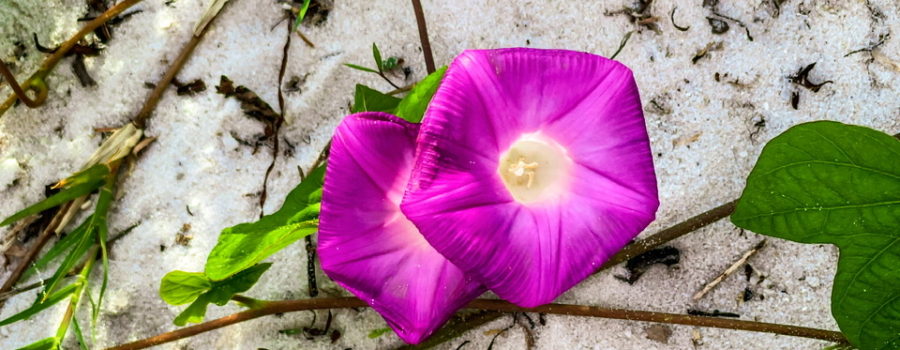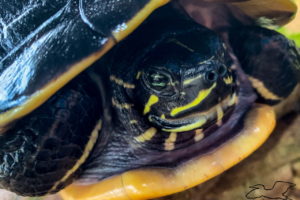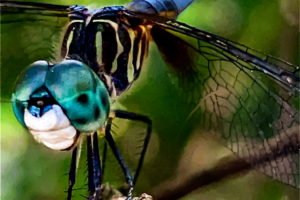The Beach Has Lots of Beautiful Plant Life, Too!

All this week I’ve been sharing things that I ran into on my trip to Fort Island Gulf Beach (well, except for last night. Oops!), so in keeping with that theme, I thought tonight I would discuss a plant that lives out there. There were several that I looked at and photographed, but I thought I’d start with the most striking one first. It’s not actually a Florida native, but it has become naturalized here since it’s import many decades ago for use as an ornamental flowering vine. It is the ivy leafed morning glory or Mexican morning glory(Ipomoea hederacea), and if you think it looks a lot like the morning glories that you may have in your garden, that’s because they are closely related. The ivy leafed morning glory is still rarely sold as an ornamental, but it is very rapidly growing and spreads quickly so it can easily take over the garden and out compete the other plants. The common morning glory or purple morning glory (Ipomoea purpurea) is less likely to take over, so it is generally preferred as an ornamental.

At the beach these beautiful vines were growing wild along the beach edges, but up high enough to avoid the salt water at high tide. They were mainly spreading along the ground, but where there were taller things to climb, they did climb. These vines like disturbed soil, so it’s not uncommon to find them at construction sites, along beach edges, along highways, at woods edges, and in pastures. They are very good at stabilizing loose soil in those areas, and in that respect they are helpful to the environment. After the soil is stabilized, other types of plants can move in and colonize disturbed area too. As you can probably guess, ivy leafed morning glories like full sun or partial sun. The vines themselves can grow in partial shade, but they don’t flower well there. They also like moist, but well drained soil for getting started, but become pretty drought tolerant once established. These vines are tropical in nature, and are native to Central and South America. As I stated earlier, they have become naturalized here in Florida and in all of the eastern two thirds of the rest of United Stated as well as Arizona, New Mexico, and Ontario. In some states they are considered an invasive species due to their ability to spread so rapidly.

Not only are ivy leafed morning glories helpful to the environment by stabilizing the soil in disturbed areas, but they also provide food for a number of wild animals. Bees, hummingbirds, and some of the larger butterflies like to feast on the nectar when the plants are flowering. Deer and rabbits will occasionally browse on the leaves, but they are not a favorite. The seeds can also be eaten by birds including quail, wild turkeys, and a number of songbird species. Once again, though, a seed that can be eaten by birds can be toxic to people and pets. The seeds contain a substance that if eaten by us can cause auditory and visual hallucinations, gastrointestinal upset, tremors, and even death if eaten in sufficient quantities. Some people will grind up and eat the seeds or make a tea specifically to induce hallucinations, but one article I read indicated that the “hangover” the next day was pretty bad! Not my idea of a good time!

If you like beautiful nature photography and artwork accompanied by engaging nature and animal related content this is the blog for you! Subscribe below!





Recent Comments